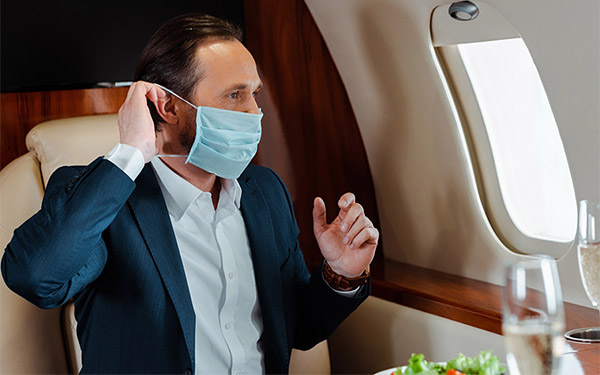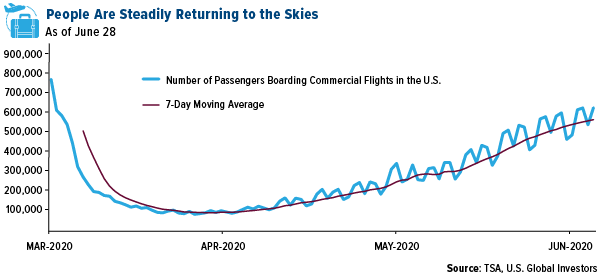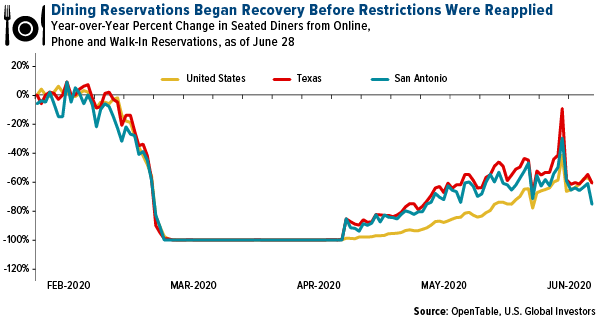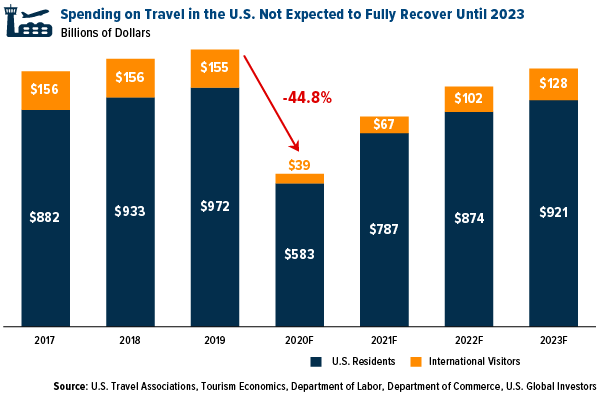
As you may have already heard, the European Union (EU) just released its list of 15 countries that are permitted to visit the 27-country bloc starting today, and the U.S. was not among them. With the rate of new coronavirus cases spiking in a number of states including Texas, Florida and Arizona, EU officials have determined that the risk is too great to welcome Americans at this time.
Although disappointing, the decision is but a temporary setback. The EU plans to revisit the list of approved countries once every couple of weeks or so, meaning American travelers could be given the green light as soon as mid-July—provided the rate of infection starts going in the opposite direction.
It’s not all bad news for the U.S. travel industry, though. Within the U.S., the number of people boarding commercial flights continues to rise at a healthy pace. On Sunday, June 28, close to 634,000 passengers were screened by the Transportation Security Administration (TSA). Not only is that a post-pandemic high, but it’s also up more than seven times from the low of 87,500 passengers on April 14.
Many Americans are understandably leery about flying at this time, but carriers have taken drastic measures to ensure that passengers are safe and comfortable during flights. That includes everything from requiring mask-wearing at all times to conducting a deep cleaning before every flight to, in some cases, blocking off the middle seats.
American Airlines officials are so confident in the carrier’s ability to keep their planes disinfected that, beginning today, flights will be booked to capacity, up from 85 percent capacity. Meanwhile, United Airlines will be adding 25,000 flights to its schedule in August, to reach 48 percent of its total capacity from the same time a year earlier.
Restaurants Reverse Course, Texas Bars Close
Whereas airlines are cautiously increasing capacity, many restaurants in the U.S. appear to have opened faster than advised. As a result, some state and local officials are instructing bars and restaurants to limit capacity to prevent further spread of the coronavirus.<
The chart below uses data provided by the restaurant reservation service OpenTable. It shows you the percent change in reservations from a year earlier.
Out of curiosity, I compared reservations in the U.S., Texas and our hometown of San Antonio. Perhaps not surprisingly, bookings in Texas raced up dramatically, far faster than the national average, as Governor Greg Abbott reopened the Lone Star State’s economy. However, as cases and hospitalizations in Texas began to spike—on Tuesday, Texas was one of eight states that reported a new single-day high in new infections—Abbott ordered that dine-in restaurant service be reduced to 50 percent capacity and that bars be closed altogether.
As you may imagine, Texas bar owners were none too pleased with Abbott’s mandate, and today several of them filed a $10 million federal lawsuit against the governor for unfairly discriminating against bars.
“It wasn’t like he even reduced the bars and nightclubs to 25 percent—we’re closed to 100 percent,” commented one of the plaintiffs, Texas Bar and Nightclub Alliance President Michael Klein.
The bar industry employs some 800,000 people in the state of Texas.
On a nationwide scale, the picture looks somewhat discouraging. According to Yelp, there were close to 140,000 total business closures between March 1 and June 15. Of those, 41 percent are “permanent” closures, meaning the other 59 may still be able to reopen when the time is right. Restaurants and retailers have been hardest hit from the virus, Yelp reports, with more than half of all restaurants permanently closed as of June 15.
U.S. Hotel Demand Not Expected to Fully Recover Until 2023
As for hotels, it’s now estimated that we won’t see a full recovery until 2023 at the earliest. That’s according to the latest projection from hospitality analytics firm STR and Tourism Economics.
Writes Jan Freitag, senior VP of lodging insights at STR, it may take “11 quarters for the number of room nights sold to rise to the corresponding levels of 2019.” She adds: “Similarly, it will take until 2023 for occupancy to reach the 20-year historical average.”
This has far-reaching consequences beyond travelers not having a place to stay while on the road. U.S. states and local governments could see a collective tax loss of as much as $16.8 billion in 2020 due to a sharp drop in travel demand, according to the American Hotel & Lodging Association (AHLA) and Oxford Economics.
Remember, this is just one group’s projection. Hopefully we can see improvements at a much faster pace. The sooner more people begin following health experts’ advice on social distancing and wearing masks, the greater our chances are of flattening the curve and returning to business as usual.
All opinions expressed and data provided are subject to change without notice. Some of these opinions may not be appropriate to every investor. By clicking the link(s) above, you will be directed to a third-party website(s). U.S. Global Investors does not endorse all information supplied by this/these website(s) and is not responsible for its/their content.
Holdings may change daily. Holdings are reported as of the most recent quarter-end. The following securities mentioned in the article were held by one or more accounts managed by U.S. Global Investors as of 3/31/2020: American Airlines Group Inc., United Airlines Holdings Inc.



